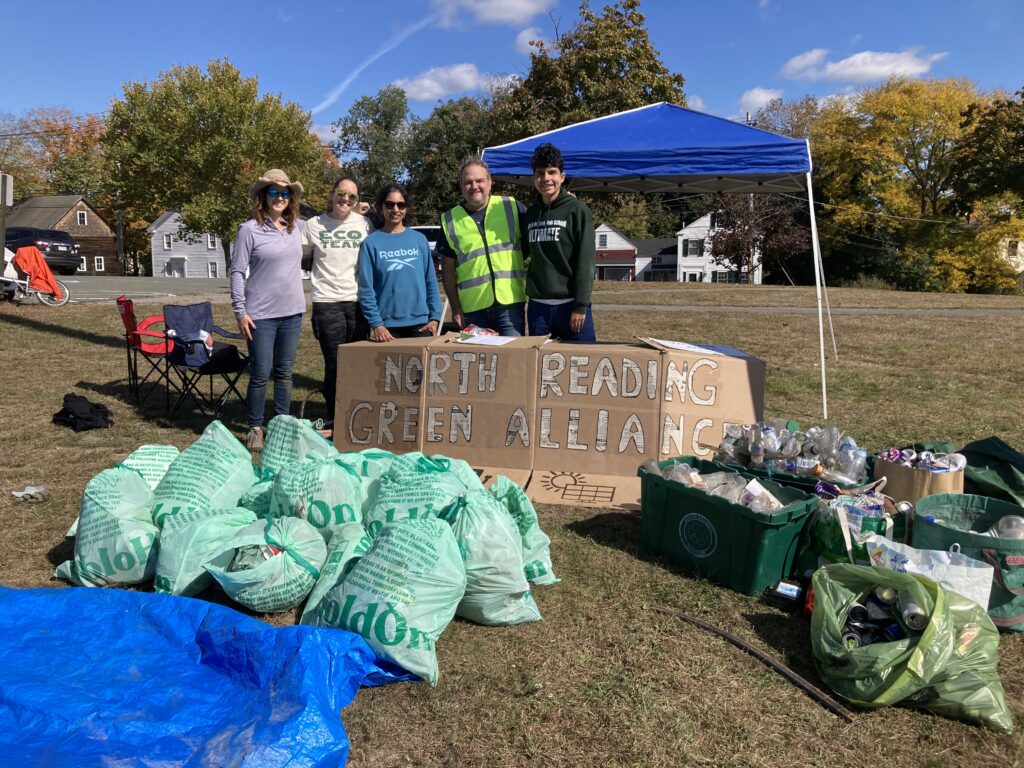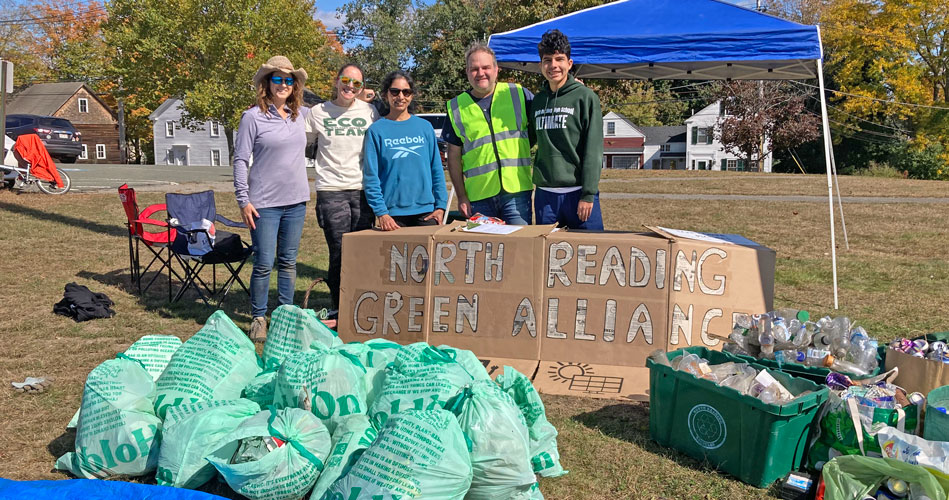
THE NORTH READING Green Alliance (NRGA) and High School EcoTeam conducted another successful cleanup event this fall. Participants include (from l-r): Janet Stevenson (NRGA), Shellie Kerrigan (NRHS EcoTeam), Usha Pillai (NRGA), Matthew Page (Sustainability Committee) and Aakash Stewart (NRHS senior and EcoTeam member). (Courtesy Photo)
By USHA PILLAI, Ph.D.
North Reading Green Alliance
NORTH READING — My group, the North Reading Green Alliance, in collaboration with the High School EcoTeam, held a fall cleanup in our town on October 6. With the help of 25 volunteers, and aided by excellent weather, we managed to collect many bags worth of litter from the area around the Town Common and along parts of Rte. 28. We then conducted an audit of the litter to count up all the plastic items, just as we had done in our spring cleanup in May. This time around we also counted the cans and glass bottles.
On analyzing the audit data from May and October, we found that the most littered plastic objects continue to be the regular size drink bottles and mini alcohol bottles, followed closely by cups with lids and straws. We also found the litter to contain a very high number of drink cans that are made of aluminum.
While all of these are single-use materials, one key difference is that aluminum cans are easily be recycled whereas recycling of plastics continues to be very problematic. For many decades, we had been led to believe that all plastics that have the familiar recycling symbol are processed into new plastic. However, recent research and reporting have shown that less than 10% of plastics worldwide are actually recycled and that figure might be even as low as 6% in the U.S.
In the developed economies, the plastics that don’t get recycled mostly go to landfills or incinerators but in most other countries they end up as litter or are tossed in open dumps. As we have seen first hand in our cleanups here in North Reading, even American suburbs are not immune to the problem of litter.
Litter is not just an eyesore; it is a threat to wildlife on land and in water, and even to us humans. Plastics degrade by different ways into microplastics. These smaller sized pieces of plastic have been found to be transported by air to distant, remote locations like mountains, glaciers and even the icy continent of Antarctica!
Scientific research is showing that microplastics seep into soil and also become part of the ocean carbon cycle. They are then absorbed by plants and ingested by animals that are part of our food chain.
So, it is not surprising that microplastics have also been found in our bodies. By some estimates, each of us ingests about a credit card’s worth of microplastics every week. Given that plastics contain a multitude of chemical additives, many of which are toxic, there is widespread concern that microplastics are negatively impacting our health.
So, what can we do to reduce microplastics in our environment? Given that their primary source is plastic found in the environment, we can start by preventing litter and by participating in local cleanups. We can also try and avoid using single-use plastics as much as possible, say, by ditching plastic water bottles for reusable bottles, taking our reusable bags for shopping, and refusing plastic cutlery in take-outs.
Going a step further, we can take stock of how plastics have infiltrated into every aspect of our lifestyles: they are in our clothes, in our kitchenware, in our personal care products. Shopping for sustainable alternatives to plastic is not easy in this day and age but with a little effort we can find them. It will be a worthwhile endeavor to improve our health, our environment and the planet.





